The recently issued Solid Waste Management Alternatives Study (PDF, 2.7MB) is 145 pages long, so if you can’t read the whole thing before tonight’s information session (7pm, JFK Middle School Community Room), be sure to read pages 2.10 and 6.82-6.86 as shown below, plus the summary on pages 10.130-10.138.
Table 2-1 suggests that at 34%, Northampton’s recycling rate has room for improvement (turning more of our copious food and organic waste into compost seems especially promising). Section 6 estimates the cost of disposing our trash if the landfill closes and Northampton sends its trash elsewhere. Our current average net tip fee for commercial customers is $68.07. The report states that the alternatives would cost $75-$100/ton. As reported on page 7.92, “the total amount of residential and commercial waste in the entire City of Northampton requiring disposal is in the range of 14,800 to 16,550 tons per year.”
A critical element missing from the study is an estimate of the value of Barnes Aquifer water at risk from contamination due to landfill expansion. Neither the words “Barnes” nor “Aquifer” appear anywhere in the study. City officials like Senior Land Use Planner Carolyn Misch suggest that closing the landfill will likely mean shipping our waste to a disadvantaged community in, say, South Carolina (see 8/13/09 Planning Board meeting). The Alternatives Study, however, suggests there’s a wide range of locations that will accept waste. It would seem likely we can find one that’s a better site than the one proposed for Western Northampton, i.e., one that’s further away from homes and does not threaten sensitive natural resources. Environmental and social justice should certainly be factors in site selection, whether inside Northampton or out.
Closing the Northampton landfill and shipping our waste elsewhere might be a relatively low-risk, low-harm solution to tide us over while better waste management technologies mature and the state develops strategies for the region as a whole.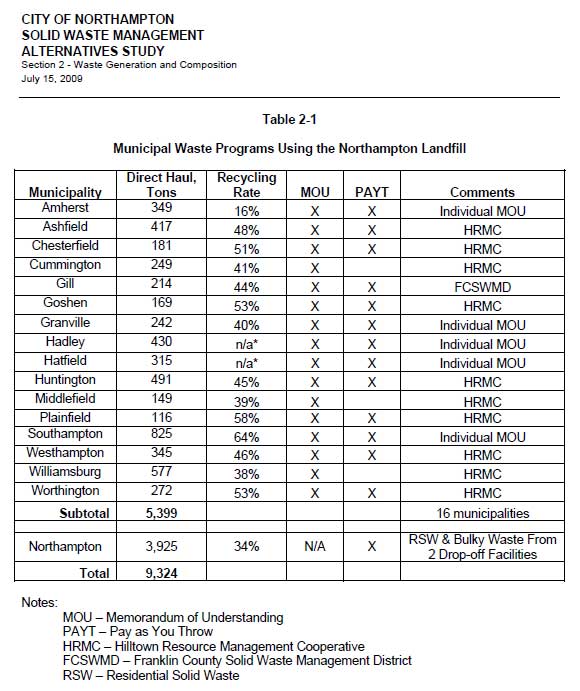
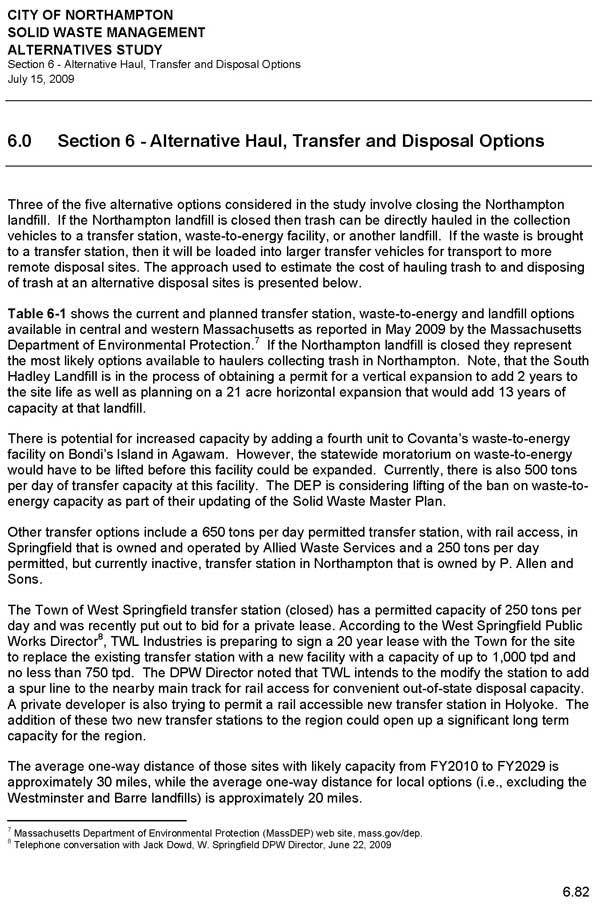
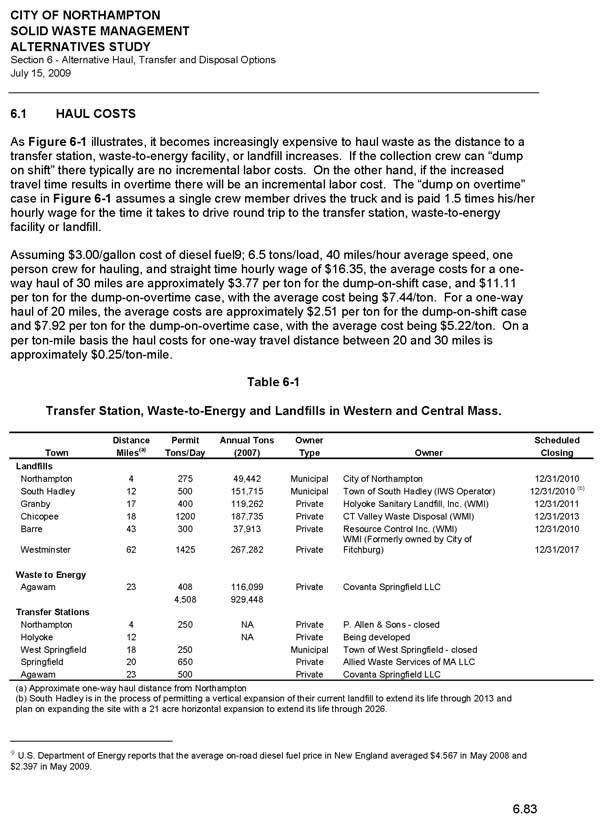
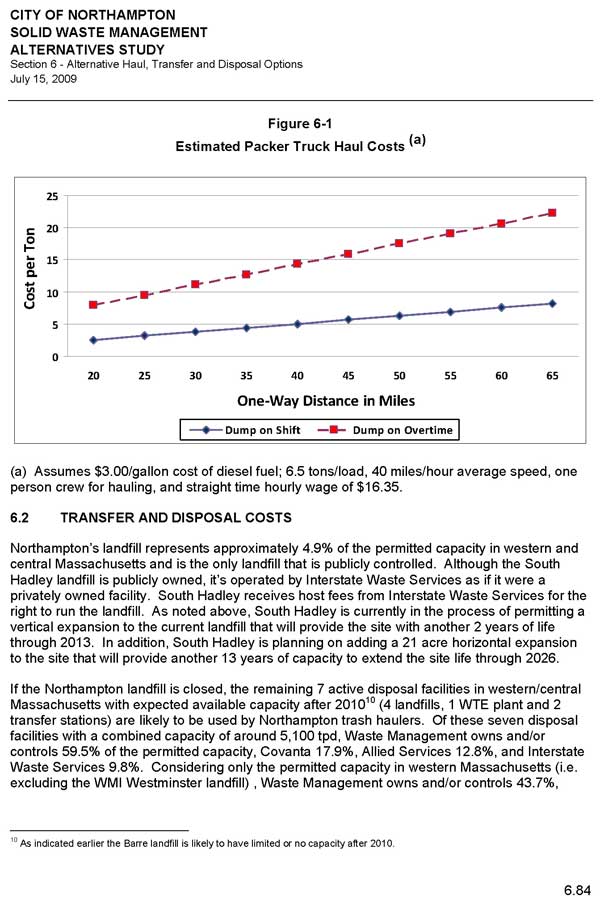
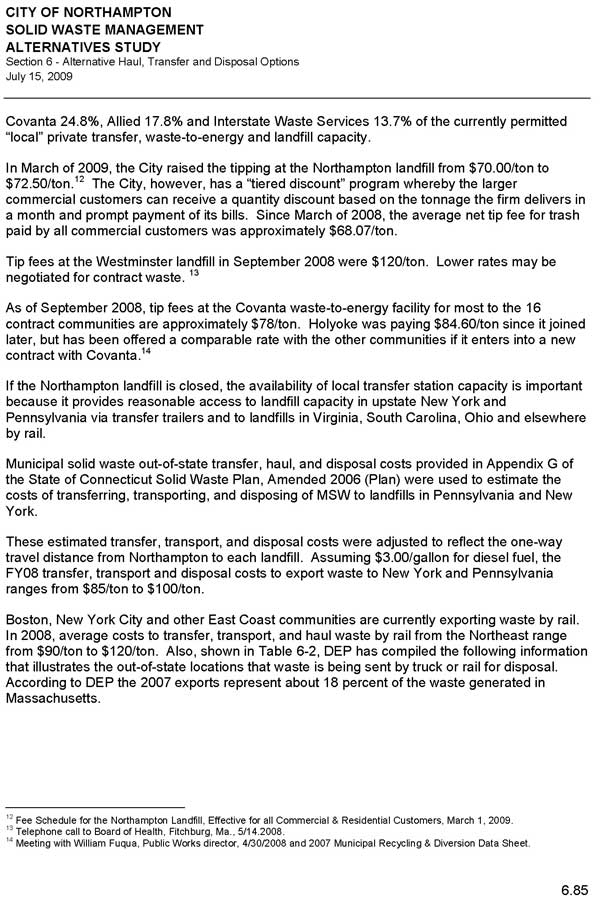
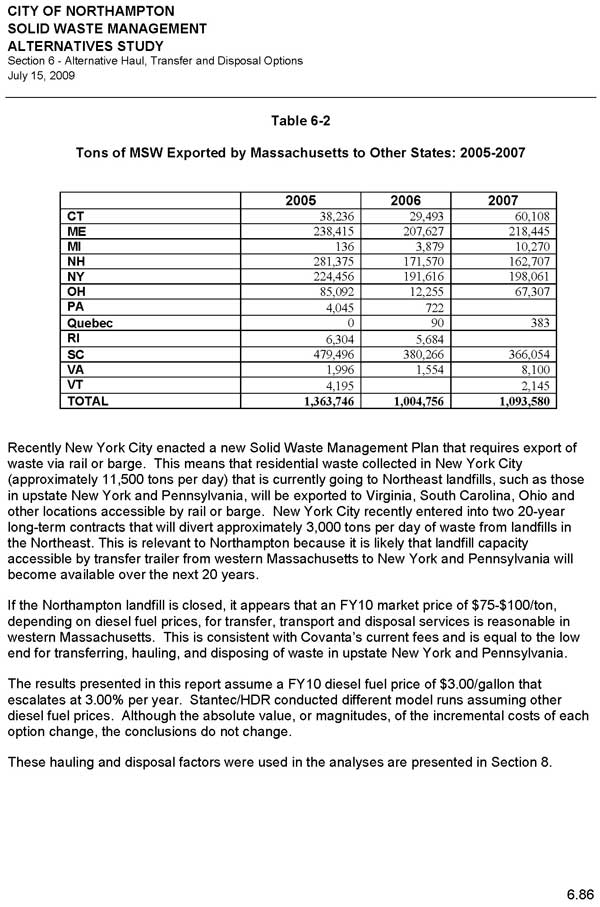
See also:
Videos: Planning Board Meeting of 8/13/09; Special Permits for Heavy Public Uses
Video: Committee on Economic Development, Housing and Land Use, 8/10/09 Meeting
Solid Waste Alternatives Study: Information Sessions on August 17, September 14
Video and Slides: Public Forum on Innovative Approaches to Manage Northampton’s Solid Waste, 11/19/08
Mayor Clare Higgins asserts that the region has a moral obligation to deal with its trash locally. The Valley Advocate quotes her as saying, “We are providing a regional public service… Western Massachusetts should deal with Western Massachusetts trash. And even leaving the region out of the equation, Northampton has to send its trash somewhere. What are the options? Will we feel good about ourselves if we ship our trash out of state to a poorer community?”
Gary Liss challenges this notion (1:55:10-1:56:30), saying, “I don’t think you have to assume that you have to provide landfill capacity. You could provide transfer capacity. The assumption of having to provide local capacity was in the 80s, when there was a concern that there wasn’t going to be disposal capacity available anywhere, and ‘we’re running out of landfill space’. That was the driver for a lot of the programs of the 80s and 90s. That doesn’t compute anymore with the regional haul…
Water Not Waste Launches to Save Barnes Aquifer
Paradise City Forum: Landfill and Aquifer
Department of Public Works: Landfill Documents